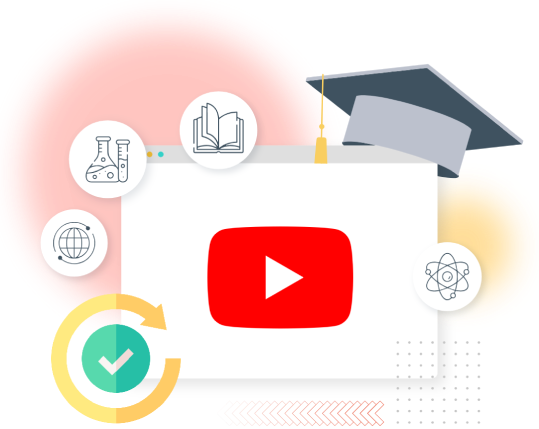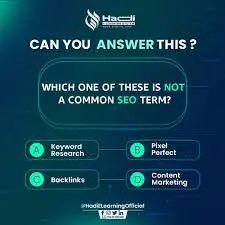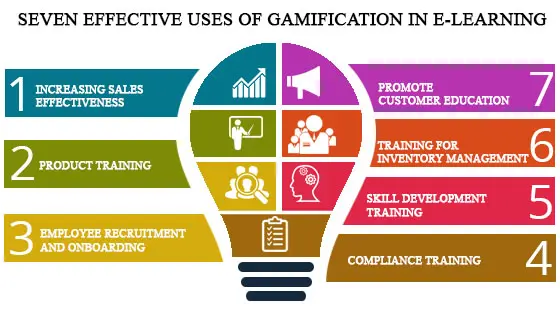
Meet Tom, the new Training Manager at a medium-sized organic farming company. Tom's excited about his new job, but he's got a big problem. The company's online training courses need to be fixed. Employees find them boring, and they need to learn more.
Tom knows he needs to fix this. He wants to create fun and practical online courses that help employees do their jobs better. But there's a catch—how can he tell if the new courses are good?
As Tom talks with his small team, they develop some ideas for elearning content development. They could use cool pictures to make the courses more engaging. Or they could use new tech like AI to make the courses smarter. It all sounds great, but Tom worries about wasting time and money if they need help figuring out what works.
This is a common problem for many companies in elearning content development. They spend a lot on online training but need help knowing if it's helping. This guide will look at easy ways to check if your online courses work. We'll help ensure your training is worth the effort and help your employees learn.
Before diving into measurement, it's essential to establish clear learning objectives for your eLearning content. Companies with comprehensive e-learning programs report 218% more revenue and 24% higher profit margins than those without such programs. You need specific and measurable goals to evaluate the effectiveness of your eLearning content. For example, "After completing this module, learners will be able to identify and apply five key customer service techniques."
One of the most straightforward ways to measure learning effectiveness is through pre- and post-assessments. Before learners engage with your eLearning content, administer a test to gauge their initial knowledge. After completing the course, give them a similar assessment to measure improvement. This method provides tangible data on knowledge acquisition and retention.

Incorporate interactive eLearning modules throughout your content to keep learners engaged and assess their progress. Short quizzes, polls, and surveys can provide valuable insights into how well learners grasp the material. These tools measure effectiveness and enhance the learning experience by promoting active participation and immediate feedback.

Modern eLearning platforms offer robust analytics that can track learner behavior. Monitor metrics such as time spent on each module, completion rates, and interaction with visual content for eLearning. High engagement levels often correlate with effective learning content. If certain sections show low engagement, it may indicate areas for improvement.
While quantitative data is crucial, pay attention to the power of qualitative feedback. Encourage learners to provide comments, suggestions, and overall impressions of the eLearning content. Feedback from users can help you evaluate the shortcomings in your content and improve them accordingly.
The test of effective learning content is how well it translates to real-world scenarios. Implement follow-up assessments or observations in the workplace to see if learners are applying their new knowledge and skills. This could involve manager feedback, performance evaluations, or task-specific assessments related to the learning objectives.
Linking learning outcomes to business performance metrics is essential for corporate eLearning strategies. Has customer satisfaction improved after a customer service training module? Have sales increased following a product knowledge course? By connecting learning to tangible business results, you can demonstrate the ROI of your eLearning initiatives.
Artificial intelligence is revolutionizing eLearning content development and assessment. AI-powered tools can adapt evaluations based on individual learner performance, providing a more accurate measure of effectiveness. These systems can identify knowledge gaps and recommend additional resources, enhancing the learning experience.
Create realistic scenarios that require learners to apply their newly acquired knowledge. This approach measures effectiveness and enhances retention by simulating real-world situations. For example, a sales training module could include a virtual customer interaction where learners must demonstrate proper techniques.
Many eLearning platforms offer comprehensive analytics dashboards. These tools provide a bird's-eye view of learner progress, content engagement, and assessment results. Dashboards are your reference for internal trends. This can help you identify the weaknesses in the course and rectify them accordingly.
To truly measure the effectiveness of your learning content, it's important to assess long-term retention. Implement follow-up assessments weeks or months after course completion to see how well learners have retained the information. This approach helps identify which concepts are sticking and which may need reinforcement.
Incorporate peer evaluation elements into your eLearning modules. This could involve discussion forums, group projects, or peer-reviewed assignments. This approach fosters collaboration and provides an additional layer of assessment as learners evaluate each other's understanding and application of the material.
Track how long it takes learners to complete modules and how many attempts they need to pass assessments. If completion times are consistently longer than anticipated, the content could be more complex or better structured. Similarly, multiple attempts suggest that the material needs clarification or simplification.

Gamification can make learning more engaging and provide valuable data on effectiveness. Use leaderboards, badges, and point systems to motivate learners and track their progress. High levels of participation and achievement in gamified elements often indicate effective and engaging content.
When developing new eLearning content or refining existing modules, consider A/B testing. Create two module versions with slight content, design, or assessment method variations. Compare each version's performance and engagement metrics to determine which approach is more effective.
For visual content in eLearning, heat maps can provide insights into which elements are catching learners' attention. This tool can help you understand if important information is being noticed or if certain design elements distract from the core content. Use this data to optimize the visual aspects of your eLearning modules.
Leverage AI and machine learning to create adaptive learning paths. These systems adjust the content and difficulty based on individual learner performance. By analyzing how learners progress through these adaptive modules, you can gain insights into the effectiveness of different content approaches for various learner types.
Assess how well learners can explain or teach the concepts they've learned to others. This could involve presentations, teach-back sessions, or creating summary materials. The ability to effectively communicate learned concepts strongly indicates thorough understanding and effective learning content.
Monitor which supplementary resources (e.g., downloadable PDFs, external links, or video content) learners access most frequently. High utilization of specific resources may indicate particularly effective or valuable content, while underutilized resources might need improvement or better integration into the primary course material.
Perform periodic audits of your eLearning content to ensure it remains relevant and practical. This process should involve reviewing assessment data, learner feedback, and industry trends. Regular audits help identify outdated information, ineffective modules, and opportunities for improvement in your eLearning content development process.
Incorporate brief, frequent assessments throughout your eLearning modules. These micro-assessments can be as simple as a single question or a quick knowledge check. They provide immediate feedback to learners and give you granular data on which specific concepts are being understood and which need more attention.
Identify where learners are most likely to disengage or drop out of the course. High drop-off rates at specific points may indicate too challenging, unengaging, or irrelevant content. Use this information to refine these sections and improve overall course completion rates.
If your eLearning platform includes social learning features like discussion forums or collaborative projects, measure engagement with these elements. High participation in social learning often correlates with increased understanding and application of the material, indicating effective content that sparks discussion and collaboration.

With the rise of mobile learning, it's essential to understand how learners access your content. 20% of college students report completing 100% of their online coursework on a phone or tablet, showcasing the growing reliance on mobile devices for education. Compare engagement and performance metrics between mobile and desktop users. If there are significant disparities, it may indicate that your content needs optimization for different devices to ensure consistent effectiveness.
Spaced repetition is a learning technique where content is reviewed at increasing intervals. Implement this in your assessment strategy by retesting critical concepts over time. This approach reinforces learning and provides data on long-term retention, helping you identify which parts of your content have a lasting impact.
For skills-based eLearning, measure the time it takes learners to reach proficiency in a particular skill. This metric can help you understand the overall effectiveness of your training program and identify areas where learners might be struggling or progressing faster than expected.
Leverage AI and machine learning to predict learner outcomes based on early engagement and performance data. These predictive models can help you identify at-risk learners early on, adjust your content, or provide additional support to improve overall effectiveness.
Use simulations to measure how well learners can apply their knowledge for complex skills or processes. Track metrics like decision-making speed, accuracy, and problem-solving approaches within these simulations to gauge the effectiveness of your eLearning content in preparing learners for real-world scenarios.
Measuring the return on investment is crucial for corporate eLearning strategies. Calculate the costs of developing and implementing your eLearning content against the benefits, such as improved productivity, reduced errors, or increased sales. This analysis provides a concrete measure of your content's effectiveness in business terms.
Remember that measuring the effectiveness of your learning content is an ongoing process. Use the insights gained from these measurement techniques to refine and improve your eLearning content development continuously. Regular updates and improvements based on data-driven decisions will ensure your content remains practical and relevant.
Partnering with a professional content writing agency in India like Lexiconn can make all the difference when creating and measuring effective eLearning content. As a leading content writing agency in Mumbai, Lexiconn brings a wealth of experience in eLearning content development.
Lexicon understands the unique challenges of creating engaging and effective eLearning materials. Their team of skilled writers and instructional designers can help you craft interactive eLearning modules that capture learners' attention and deliver measurable results. By leveraging their expertise, you can ensure your content is both informative and engaging from the start.
One of Lexiconn's strengths is developing comprehensive assessment strategies. They can help you create pre-and post-assessments, interactive quizzes, and scenario-based evaluations that accurately measure learning outcomes. These tools seamlessly integrate into your eLearning content, providing valuable data on learner progress and effectiveness.
As a content writing agency in India, Lexiconn is well-versed in creating culturally relevant and globally applicable content. This is particularly valuable for organizations with a diverse workforce or international operations. They can help you develop eLearning materials that resonate with many learners, improving engagement and effectiveness.
Lexiconn also excels in creating visual content for eLearning. Their designers can develop infographics, interactive elements, and other visual aids that enhance learning and retention. These visuals make the content more appealing and provide additional metrics for measuring engagement and understanding.
Moreover, Lexiconn stays up-to-date with the latest eLearning trends, including AI use in eLearning. They can help you incorporate cutting-edge technologies and methodologies into your content strategy, ensuring your eLearning materials remain practical and relevant in a rapidly evolving digital landscape.
By partnering with Lexiconn, a trusted content writing agency in Mumbai, you gain a valuable ally in your quest to create and measure effective eLearning content. Their expertise can help you develop, implement, and evaluate your eLearning strategy, ensuring your training initiatives deliver value to your organization.
Measuring the effectiveness of your learning content is a multifaceted process that requires a combination of quantitative and qualitative approaches. By implementing these strategies, you can gain valuable insights into how well your eLearning content is performing and identify areas for improvement. Remember, the goal is to create content and impactful learning experiences that drive actual results for learners and organizations alike.
Book a 30-minute complimentary session or drop us a line at [email protected].



I have read and accept the Privacy Policy
Read More